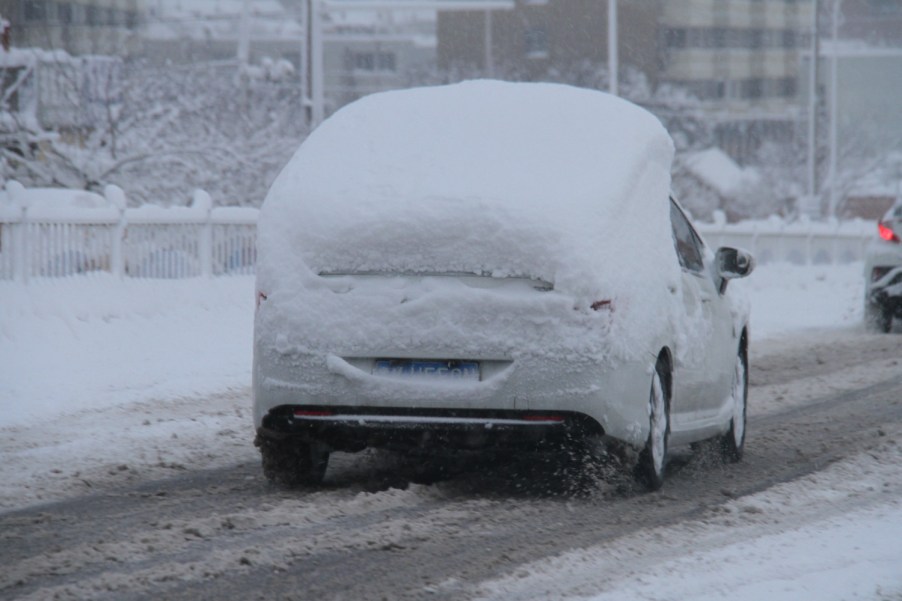
The Best Safety Features for Driving in Snow and Winter Weather
Considering getting a new car, truck, or SUV for the winter weather? Kelley Blue Book says these are some of the best safety features for driving in the snow and winter weather. If your new car or sport utility vehicle doesn’t have one of the features below, you can probably add it.
The best safety features for driving in the snow include adaptive headlights
Kelley Blue Book has everything buyers might want to look for in a new car. Gone are the days of homemade kits in the trunk (hopefully) to get you out of a pickle. Since 2013, government agencies have required various car features, like traction control, stability control, and anti-lock brakes.
You definitely want to be sure your new vehicle has antilock brakes and stability control. It was required in 2013 but wasn’t always included before that. Most higher trim level vehicles might have it before that.
One of the best safety features for snow and winter weather is adaptive headlights. These headlights can change or rotate any way the wheel turns, giving you a better view of incoming traffic or roads. Some headlights have corner lights on the side that help illuminates the street in the direction you are headed. Automatic high beams make life easier on a tough drive. A sensor detects the lights of oncoming vehicles and turns off the high beams when necessary.
Blind-spot monitoring is one of the best safety features for driving in the snow
Blind-spot monitoring is one of the best safety features for driving in the snow. This system helps detect vehicles and other things that might be in your blind spots. It can help you keep from moving into a lane that is occupied or if someone is already moving into that lane.
Kelley Blue Book says that one of the easiest ways to lose control in the snow is by making sudden steering adjustments to avoid a vehicle nearby. Blind-spot monitoring will hopefully help prevent that.
Automatic temperature control is a creature comfort but worth checking out. You can set this up once, which will keep your cabin comfortable throughout the drive. Forward collision warning and emergency braking use cameras and sensors to detect hazards on the road. Such systems help the vehicle stop if the driver cannot do so.
Don’t forget the heated mirrors and seats

Heat it all! These days, automakers have all sorts of technology to heat your mirrors, seats, windshield, and wipers. In most situations, you can add some kind of cold weather or winter weather package that will add all these heaters to your vehicle. Not only will these help get the snow off your car, but it will help keep it off while you are driving.
Don’t forget the remote start! Turn your car on and get the cabin warmed up for a minute or two before you hop in. Consumer Reports says heating your car before getting in won’t help on the roads, but it will keep you comfortable.
Finally, don’t overlook your tires. Ensure your tires are in good condition and that you have snow tires on if you face an entire winter season in the snow. Your vehicle might not have these tires on when you buy it, so ensure you have the right ones before driving.



